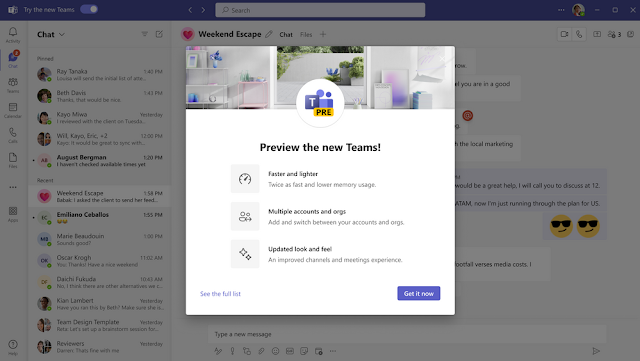Enhancements in Microsoft Teams: Rollout Schedule, New Controls, and Direct Deployment
Introduction
Microsoft Teams continues to enhance its offerings to facilitate superior communication and collaboration within organizations. Since our announcement in March 2023, we have introduced several improvements including third-party applications, line-of-business (LOB) applications, and the capacity to handle multi-tenant organization (MTO) scenarios. Our plans for the upcoming Teams experience get even more exciting. Here's a glimpse of what’s to come, based on our latest announcement MC533687.
What's New in Microsoft Teams?
The new Microsoft Teams app introduces three key updates set to revolutionize your Teams experience:
The New Teams Toggle: Administrators with the 'UseNewTeamsClient' policy, set to Microsoft default value, will see a 'Try the new Teams' toggle within the existing Teams client.
Direct Deployment: Administrators will gain the capability to directly deploy the new Teams client to PCs across their organization.
New Teams as Default App: The new Teams will become the default application for users where the admin policy is set to Microsoft's default.
Note: These changes are consistent with our commitment to empowering administrators in managing the transition to new Teams in the best possible way for their organizations.
Timeline of Changes
Mid-to-Late July 2023
The 'Try the new Teams' toggle will be displayed within the classic Microsoft Teams client. This will commence in late July and continue into early August 2023 for Business plans (Business Basic, Business Standard, Business Premium, and Teams Essentials).
Administrators will be able to deploy the new Teams client directly to PCs in their organization from mid-July 2023.
Starting late July, admins can deploy a new setting to make new Teams the default app for their users.
September 2023
- The new Teams will become the default app starting late September 2023 for both Business and Enterprise plans.
Impacts on Your Organization
Users will begin seeing the 'Try the new Teams' toggle within their classic Teams app.
Administrators will be able to deploy new Teams for their organization en masse, eliminating the need for individual user admin privileges.
Administrators can manage the 'Use new Teams client' policy and configure 'New Teams as default' for their users.
Preparing for the Transition
To prepare for these changes, we recommend reviewing the resources and timelines provided to plan your organization's rollout of the new Microsoft Teams app effectively. Visit our 'Bulk deploy the new Microsoft Teams client' documentation and our 'Policy settings for deployment' page to learn more about the process.
Stay tuned to our Microsoft Teams (Preview) for updates on new features and support for platforms such as Mac, VDI, Web, and Government Clouds.
Conclusion
As Microsoft continues to innovate and adapt to the ever-changing world of digital communication, the rollout of the new Microsoft Teams client exemplifies our commitment to providing robust, intuitive, and comprehensive collaborative solutions. Prepare your organization for this transition and harness the full potential of the new Microsoft Teams experience.



Comments
Post a Comment